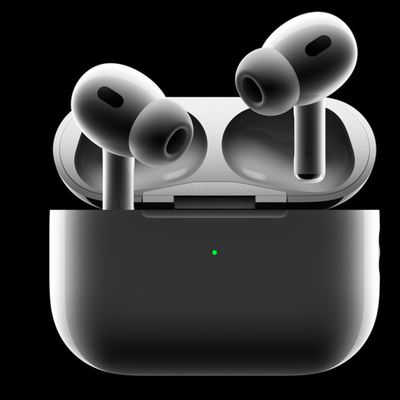In March 2025, Apple updated the iPad Air and entry-level iPad, delivering unspectacular but solid spec upgrades for those looking at Apple's cheaper tablets. Those updates came on the heals of an October 2024 update for the iPad mini, leaving the iPad Pro from May 2024 as the least updated iPad in the lineup.
In this guide, we're taking a look at how the various models compare to help potential buyers choose which one is right for them.
iPad Comparison
Which iPad Is Right for You?
If price is your biggest consideration, you'll want to look at the standard 11th-generation iPad, knowing that it contains some older technologies and limitations but is still plenty good enough for many users, especially given its recent update. If you're looking for portability, check out the iPad mini, and if you want a mid-sized iPad with more to offer than the entry-level iPad, check out the iPad Air, which as of 2024 is available in two sizes.
What about the iPad Pro? Apple's high-end iPads are in a class of their own, and it shows in their higher prices. Unless you're a pro-level user or price is no object, you'll probably want to look to cheaper options, but the iPad Pro models deliver cutting-edge technology for those who need it.
With that quick overview out of the way, let's take a look at what each model has to offer.
iPad Models
11-inch iPad
Apple's 11th-generation version of the iPad has an 11-inch display and the A16 chip, and it starts at $349 for the Wi-Fi only model. This is the cheapest iPad currently sold by Apple, and it offers a good mix of features, although it does not support Apple Intelligence features given its lower-end specs.
Apple gave the iPad an entirely updated design with the 10th-generation model in 2022 and that carries over to the 2025 model, ditching the Home button and adopting the slim bezel design of the iPad Air and iPad Pro. It does still have Touch ID, but it's been moved to the power button on the top edge of the device. It also features USB-C instead of Lightning, and it has an improved 12MP Wide rear-facing camera.
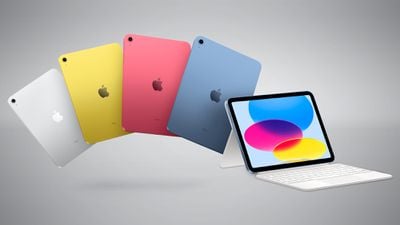
This is still on the low end of the iPad family lineup, however, so you won't get support for the Apple Pencil 2 (only the first-generation model or the USB-C model). Thankfully, Apple saw fit to boost storage options with the latest model, and it now starts at 128GB with the ability to upgrade to 256GB or, for the first time in an entry-level iPad, 512GB.
Key specifications include:
- An 11-inch Liquid Retina display with True Tone
- Side button with Touch ID
- A16 chip
- 12MP Wide back camera and 12MP Landscape Ultra Wide front camera
- First-generation Apple Pencil and Apple Pencil with USB-C compatibility
- Magic Keyboard Folio compatibility
- USB-C port
- Available in Blue, Pink, Silver, and Yellow
iPad mini
Next up is the iPad mini, which was updated in October 2024 and starts at $499 for Wi-Fi only models. Apple similarly doubled the base storage to 128GB with this update, offering a better value for buyers at the low end, while also offering up to 512GB of storage at the high end.
With a display size of 8.3 inches, you can't quite call it pocketable, but the iPad mini is definitely great for having something small on the go that still offers a much larger screen size than even Apple's largest iPhones.

Looking beyond the display size, this is a capable device using an A17 Pro chip to deliver support for Apple Intelligence features, so it's a fairly speedy tablet. You'll get an improved display compared to the entry-level iPad, a 12-megapixel rear camera with LED flash, and support for the most advanced Apple Pencil Pro.
Key specifications include:
- Fully laminated 8.3‑inch Liquid Retina display with True Tone
- Touch ID in the power button
- A17 Pro chip with 5-core graphics and 16-core Neural Engine
- 12MP Wide back camera with Smart HDR 4 and 4K video
- 12MP Ultra Wide front camera with Smart HDR 4 and 1080p HD video
- Landscape stereo-speaker audio
- Apple Pencil Pro and Apple Pencil (USB-C) compatibility
- Bluetooth keyboard compatibility
- 10Gbps USB-C port
- Available in Space Gray, Blue, Purple, and Starlight
iPad Air
Moving toward the higher end of the iPad family is the iPad Air, which was updated with the M3 chip in March 2025. As of 2024, the iPad Air is available in 11-inch and 13-inch sizes, with the smaller model starting at $599 for Wi-Fi only connectivity and the larger model starting at $799. The iPad Air is the perfect mid-tier option that offers many of the same features as the top-of-the-line iPad Pro but at a lower price point, and it's a great option for many users.

Apple also released a new Magic Keyboard accessory specifically for the iPad Air, offering much of the same experience as the version for the iPad Pro with a cantilever design, function keys and, a large trackpad, but stripped down a bit to hit a lower price point.
Key specifications of the iPad Air include:
- Fully laminated 11‑inch or 13-inch Liquid Retina display with True Tone
- Touch ID in the power button
- M3 chip
- 12MP Wide rear camera with Smart HDR 4 for photos and 4K video at up to 60 fps
- Landscape 12MP FaceTime HD front camera with Smart HDR 4
- Apple Pencil Pro and Apple Pencil with USB-C compatibility
- Magic Keyboard and Bluetooth keyboard compatibility
- USB-C port
- Available in Space Gray, Blue, Purple, and Starlight
iPad Pro
If you're looking for true portable workstation power, then the last two iPads in the lineup, the iPad Pro models, could be what you're interested in. These tablets were updated in May 2024 with the M4 chip, OLED displays, thinner designs, higher starting storage capacities, and more. Pricing starts at $999 for the 11-inch model and $1,299 for the 13-inch model.
While these are now the oldest iPad's in Apple's lineup, they are still a step up from the iPad Air in almost every way, from the crisp OLED displays with 120Hz ProMotion technology for smoother display responsiveness and a USB-C connector with Thunderbolt support to a more powerful M4 chip, Face ID, and a maximum of 2TB of storage.

The iPad Pro is overkill for most users, but if you're a pro-level user or just want the latest technology, the iPad Pro has a lot to offer.
Key specifications of the two iPad Pro models include:
- 11‑inch or 13-inch Ultra Retina XDR OLED display
- Face ID
- M4 chip
- 12MP Wide rear camera
- Smart HDR 4 for photos, 4K video at up to 60 fps
- Landscape 12MP TrueDepth front camera with Center Stage, Portrait mode, Portrait Lighting, and Smart HDR 4
- Four-speaker audio
- 5G connectivity
- Apple Pencil Pro and Apple Pencil with USB-C compatibility
- Magic Keyboard and Bluetooth keyboard compatibility
- Thunderbolt / USB 4 connector
- Available in Silver and Space Black
Customization Options
Now that we've looked at the base specs of each of iPad models, it's time to think about various options like storage, cellular connectivity, and AppleCare+.
Storage: There are several storage options for each iPad, so think about how much you might need. For the 11th-generation iPad, Apple is offering three storage options: 128GB for $349, 256GB for $449, and an all-new 512GB version for $649. The iPad mini also comes in three storage options: 128GB for $499, 256GB for $599, and 512GB for $799.
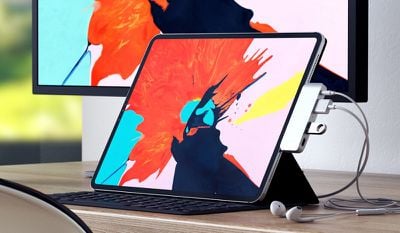
The two iPad Air models are available in four storage capacity options, with the entry-level 128GB models priced at $599 for the 11-inch version and $799 for the 13-inch version. On both display sizes, 256GB is available for an additional $100, 512GB is available for an additional $300 over the base model, and 1TB is available for an additional $500 over the base model.
Lastly, the iPad Pro offers the highest storage capacity options, with the base models of both sizes starting at 256GB, double that of the previous generation. Those base models start at $999 for 11-inch and $1,299 for 13-inch, with additional storage options including 512GB ($200 upgrade from base), 1TB ($600 upgrade from base), and 2TB ($1,000 upgrade from base).
Power-heavy users should always look to the higher-capacity iPad models to ensure they don't have to worry about constantly deleting apps and other files for storage space. Otherwise, Apple's iCloud is a great way to offload files and lets you opt for a cheaper iPad with less storage.
Unless you're storing a large local music library, downloading lots of video for offline playback, have a ton of huge apps, or doing pro-level work requiring lots of large files, mainstream users can usually get away with the lowest-tier storage options, particularly now that all models start with at least 64GB and more expensive models start much higher than that.
Display: For the first time, Apple is offering a nano-texture display option on an iPad, but only on the iPad Pro and only on the higher-end 1TB and 2TB storage capacity options. This $100 upgrade is intended for users with high-end color-managed workflows or who use their devices in demanding ambient lighting environments such as outdoors. Think real estate agents and home inspectors, but there are plenty of other use cases where the reduced glare could be beneficial.
Cellular Connectivity: If you need to ensure that you can use your iPad at any time, including when you're not near a Wi-Fi connection, you can opt for a Wi-Fi + Cellular option to ensure you're always connected.
Cellular support adds $150–$200 onto the price of all corresponding Wi-Fi iPad models, depending on which iPad and which storage capacity. You'll also have to sign up for a data plan for an additional cost with a supported carrier, like AT&T, Sprint, T-Mobile, or Verizon in the United States.
All told, it's not a cheap upgrade, and many users prefer using their phone as a hotspot to deliver connectivity to a Wi-Fi iPad while on the go. But if your phone plan doesn't allow for hotspot usage or you just want the convenience of having your iPad connected directly to a cellular network at all times, the option is there.
All current iPad models support sub-6GHz 5G with data speeds that will be plenty fast for most users, but lacking support for the fastest mmWave 5G technology available in some urban areas.
AppleCare+: New iPads come with one year of hardware repair coverage through Apple's limited warranty policy, as well as up to 90 days of complimentary support. But if you want more coverage, Apple offers optional AppleCare+ packages priced at $34.99/year for the iPad and iPad mini, $39.99/year for the 11-inch iPad Air, $49.99/year for the 13-inch iPad Air, $74.99/year for the 11-inch iPad Pro, and $84.99/year for the 13-inch iPad Pro. Monthly pricing options at 10% of the annual rates are also available.
AppleCare+ extends your iPad's coverage for as long as you continue to subscribe and adds unlimited incidents of accidental damage coverage, subject to a service fee of $29 for screen damage and $99 for other types of accidental damage. Prices vary elsewhere.
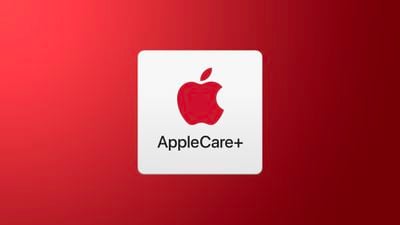
iPad AppleCare+ plans also cover accidental damage to the Apple Pencil and Apple-branded iPad keyboard accessories with a $29 fee plus tax per incident. AppleCare+ provides 24/7 priority access to support advisors via online chat or phone.
Apple charges high fees for accidental damage to a new iPad without AppleCare+, so as with most forms of insurance, the plan can pay for itself if ever used. AppleCare+ must be added within 60 days of purchasing a device.
Accessories
Each iPad has a plethora of accessories to choose from for protection, style, or usability, many of which Apple creates and sells itself on Apple.com and in Apple retail stores.
Apple Pencil: The Apple Pencil is a stylus most popular with artists but also used by others, providing a comfortable and streamlined way to interact with the tablet. The second-generation Apple Pencil introduced sleek design changes, magnetic charging on the iPad mini, iPad Air, and iPad Pro, and gesture controls, none of which are available on the original Apple Pencil. A USB-C Apple Pencil introduced in late 2023 complicated the situation even further, and then the Apple Pencil Pro expanded the family to four in 2024 with advanced features like squeeze and barrel roll gestures, haptic feedback, and Find My support.

It might be unclear which iPads support which Apple Pencil models, so check out our list below. In short, the latest iPad Pro and iPad Air models can use the Apple Pencil Pro and the iPad mini uses the second-generation Apple Pencil, while older iPad models with Lightning ports work with the first-generation Apple Pencil. The USB-C Apple Pencil is the cheapest and most flexible model, supporting a mix of recent devices.
- First-Generation Apple Pencil ($99): 9.7-inch iPad (2018), 10.2-inch iPad (2019, 2020, and 2021), 10th-generation iPad (2022), iPad (A16: 2025), 5th-generation iPad mini (2019), 3rd-generation iPad Air (2019), 9.7-inch iPad Pro (2016), 10.5-inch iPad Pro (2017), 1st- and 2nd-generation 12.9-inch iPad Pro (2015 and 2017)
- Second-Generation Apple Pencil ($129): 6th-generation iPad mini (2021), 4th-generation iPad Air (2020), 5th-generation iPad Air (2022), 11-inch and 12.9-inch iPad Pro (2018, 2020, 2021, and 2022)
- USB-C Apple Pencil ($69): 10th-generation iPad (2022), iPad (A16: 2025), 6th-generation iPad mini (2021), 7th-generation iPad mini (2024), 4th-generation iPad Air (2020), 5th-generation iPad Air (2022), 11-inch and 13-inch iPad Air (M2: 2024 and M3: 2025), 11-inch and 12.9-inch iPad Pro (2018, 2020, 2021, and 2022), 11-inch and 13-inch iPad Pro (M4: 2024)
- Apple Pencil Pro ($129): 7th-generation iPad mini (2024), 11-inch and 13-inch iPad Pro (M4: 2024), 11-inch and 13-inch iPad Air (M2: 2024 and M3: 2025)
In the end, if you're only looking to purchase an iPad as a convenient app-browsing, email-checking, or FaceTime device, you don't need an Apple Pencil. But if you're an artist or other creative with a penchant for drawing or taking digital handwritten notes, Apple's stylus is definitely an enhancement to the iPad experience.
For a more in-depth look at the differences between the four Apple Pencils, check out our comparison.
Cases: Apple sells Smart Folio cases for all of its iPads, priced depending on the size of the device. You'll pay $59 for an iPad mini Smart Folio, $79 for an iPad (A16) or 11-inch iPad Air or iPad Pro Smart Folio, and $99 for a 13-inch iPad Air or iPad Pro Smart Folio.
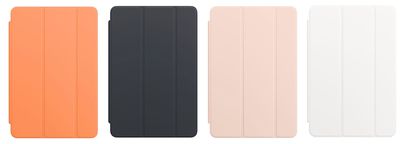
These cases magnetically attach to your iPad, offering a degree of protection while also allowing you to place the tablet in numerous angled positions. The Smart Folio cases protect both the front and rear of the tablet.
Keyboards: If you're looking to do a lot of work on an iPad Air or iPad Pro, Apple has several models of the Magic Keyboard that include a trackpad, USB-C port with passthrough charging, and more. They certainly aren't cheap, priced at $269 or $299 for 11-inch versions and $319 or $349 for 13-inch versions, but for pro-level users, it's a serious upgrade to the iPad experience.
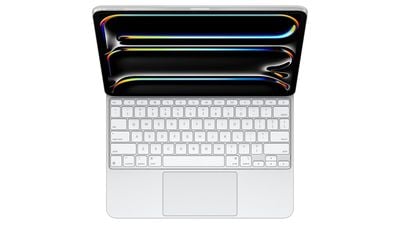
Note that there are separate Magic Keyboard models for the latest iPad Pro and iPad Air models, with the iPad Pro models featuring backlit keys, haptic feedback on the trackpad, and aluminum palm rests.
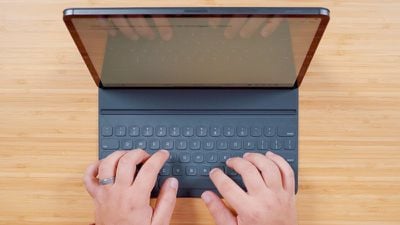
The 11th-generation iPad (A16) also has its own Magic Keyboard Folio, priced at $249.00 and available in White. It has a built-in trackpad, a 14-key function row, and a two-piece design with a detachable keyboard and protective back panel that both attach magnetically to the iPad.
These Apple-made cases are compatible with iPads that have a Smart Keyboard connector, which is a special port that magnetically attaches the keyboard to the side or rear of the iPad.
Otherwise, you can also look into popular iPad keyboard manufacturers like Logitech and Belkin, all of which sell Bluetooth keyboards that connect to iPads wirelessly. Keyboard cases are more expensive than your average case due to the added input use, but if you really plan on doing a lot of work and writing on your iPad, the two-in-one keyboard/protection combo is the way to go. The hardware keyboards give a much better typing experience and free up screen space on your iPad by getting rid of the software keyboard.
Cables: With the discontinuation of the 9th-generation iPad in May 2024, Apple has completed the transition of its iPad lineup from Lightning to USB-C, simplifying cable purchases.
All iPads come with their required cables in the box, but if you don't have many around the house it's always a good idea to stock up on more. Apple sells individual cables, but you can always shop around on Amazon for cheap and reliable brands like Anker.
So... Which iPad Should You Buy?
Overall, Apple's iPad Air is a perfect all-encompassing tablet that should hit the checkmarks for many buyers and is available in two sizes to suit. It has many of the most important features of the iPad Pro but starts at $400 less.
If you're on a bit more of a budget or looking for a relatively cheap tablet for a kid, the 11th-generation iPad (A16) saves you an additional $250 compared to the iPad Air while giving you a similar form factor and the same display size as the smaller iPad Air, but with a few compromises. At $349 or even cheaper on sale, it's hard to beat if you're a less-demanding user. Just keep in mind that it won't support current and upcoming Apple Intelligence features.
If you're someone who has preferred the small form factor of the iPad mini over the years, Apple's latest small-sized tablet is a prime candidate for those looking for an e-reader that can perform other tasks while not taking up a huge amount of space. The iPad mini doesn't have a Smart Keyboard connector like the iPad Air or a Smart Keyboard case of its own, but since the iPad mini isn't exactly a workstation device, that's not a bad trade-off (plus, you can still connect it to a Bluetooth keyboard if you want).
For $100 less than the iPad Air at $499 (128GB Wi-Fi), the iPad mini still gives you a nice laminated display with True Tone and antireflective coating, Touch ID in the power button, Apple Intelligence and Apple Pencil Pro support, and solid cameras.

And, of course, on the other end of the spectrum are the power users. If you're willing to spend the money to spec out an 11-inch or 13-inch iPad Pro, you'll get a super reliable mobile workstation with 10-hour battery life in a compact package. If you travel frequently for work, or just like setting up at a coffee shop during the day, the iPad Pro has a chance to become your MacBook replacement with a Magic Keyboard.





